
Alongside the Universal Reformer and the Cadillac, the Wunda Chair must rank as one of the most popular pieces of Pilates apparatus.
Page 98 of ‘Hubertus Joseph Pilates – The Biography’ by Pont & Romero, describes how Joseph recalled that he was part of a touring circus troupe in Britain where he was an acrobat and acted as a ‘living Greek statue’. Joseph also “recalled that in this circus he met a group of Chinese acrobats and seized the opportunity to learn their method of training. Much later, shortly after his arrival in New York, he manufactured and patented his famous “Chair” based on the acrobats’ chair but adding springs to it and also added what would be a decorative and functional element to this apparatus in the home.”
We know from Joe’s own accounts in newspapers that he was working in a circus at the outbreak of World War 1. This has been further verified by evidence arising from later research into records which show the address he was staying at in Blackpool when he was arrested was the same address used by a circus act.
Joseph also recounted that he trained his fellow German internees during his time at Knockaloe Camp on the Isle of Man (as reported in Pont and Romero’s biography and also by ‘Sports Illustrated’ magazine dated 12 February 1962).
I wonder if further inspiration and ideas for the use of a chair, incorporating springs, as a piece of exercise equipment might have progressed during Joe’s 3½ years at Knockaloe Internment Camp? Joseph said he was training fellow internees and we also know he spent time with infirm internees whose beds had metal springs in the hospital at the Camp (see my post of 24 November 2018).
Whilst Chinese acrobats were in Great Britain before WW1 performing in circuses and theatres, there were also a plethora of Germans in Britain performing acrobatic and balancing acts. ‘The People’ newspaper dated 14 February 1915 laments the fact that “there were now so few acrobatic acts in the music halls any more, and this was largely down to so many of them [Germans] being interned or emigrating to America.” The article also highlights just why they were so good, “in that gymnastics was a national sport and almost every village in Germany had a “turnverein” or gymnastic association.” I have already mentioned one of these acts, “the 3 Erretos”, who were interned and performed at Knockaloe Camp as was the case for many other acrobatic performers. A comment in one of the Camp newspapers reads: “Some good teams of acrobats have been cast upon our island here by an unkind fate”.
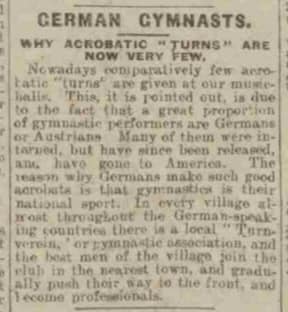
Indeed Joseph Pilates, along with 4 other internees, under the name “Pylatos Company” performed a balancing and strength act as shown in the poster below which comes from Knockaloe Internment Camp and was kindly shared to me by Eva Rincke, author of the Joseph Pilates biography “Der Man”. The first part of the act is described as a “Modern tour de force” (a performance achieved with great skill) and part 2 of their act involved “Chair and ladder balancing.”
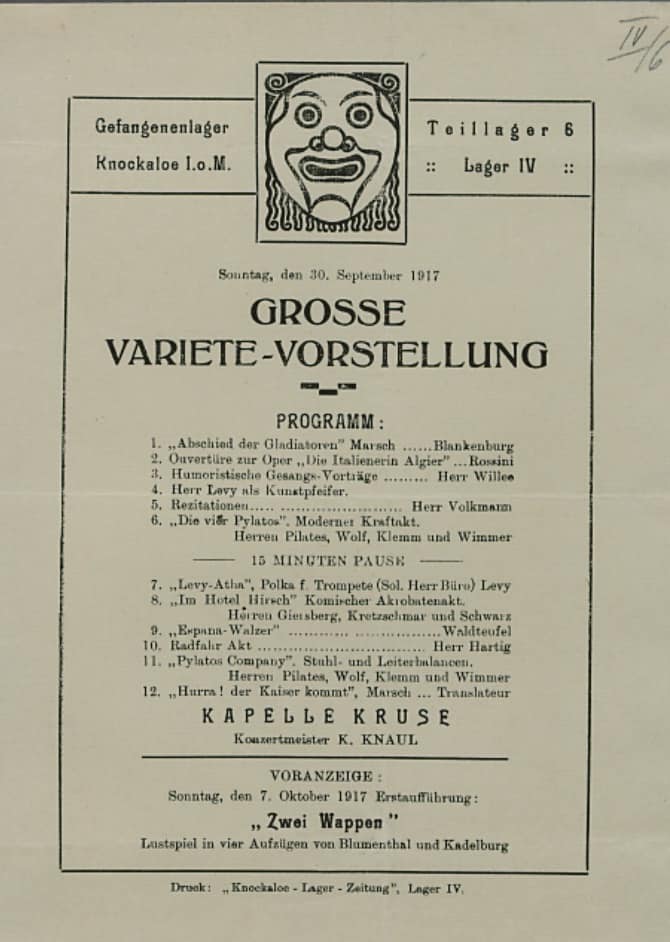
These balancing acts frequently used tables, chairs and ladders as part of their act and the below photo from Tatler magazine of the 3 Erretos shows them balancing on a table. Note that the photo may not necessarily show the same 3 Erretos that were interned in Knockaloe as several members of the same family had troupes performing under the various stage names including ‘Erretos’.
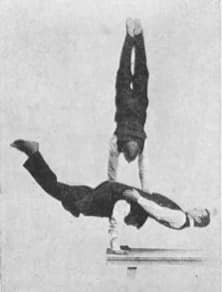
One can envisage just how such techniques could easily have inspired Joe when we compare this photo to the photo of Joe on the Wunda chair.
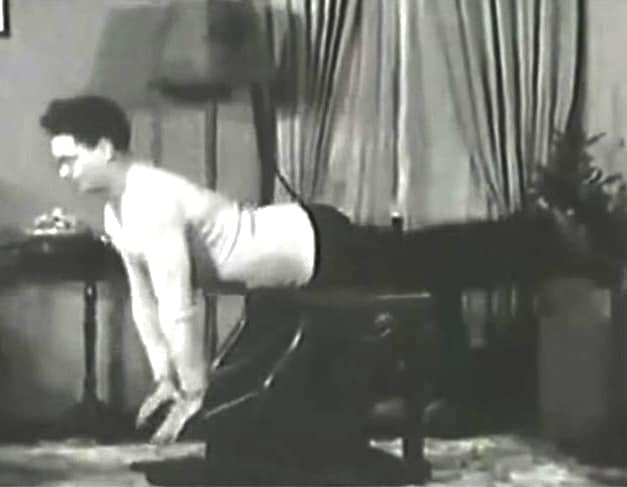
These types of acts were very specialised and required a high level of extensive training. Another newspaper article regarding one of these types of acts, ‘the Wille Brothers’, describes how they spent 3 years practising a ladder balancing routine before performing it in public!
A further photo (below) was taken at Knockaloe Internment Camp in around 1918, showing 3 internees seemingly getting ready to perform a ladder balancing act. The image is shared courtesy of Manx National Heritage.
Jonathon Grubb
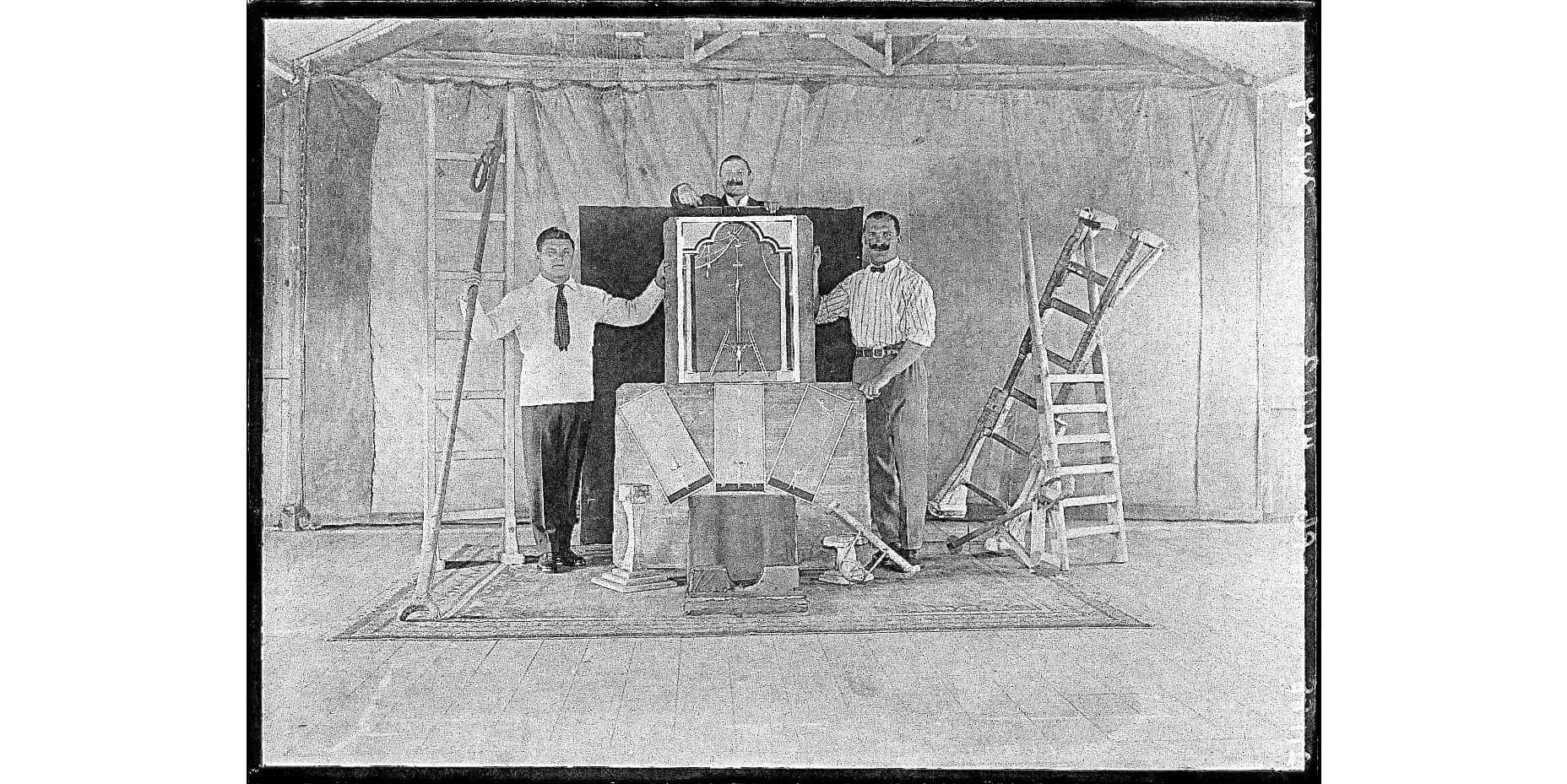
Jonathan Grubb was born in England in 1962 and has lived on the Isle of Man since he was two years old. His great grandfather Jakob Grub was interned on the Isle of Man until 28 August 1919 in the same camp as Joseph Pilates.
In his younger days Jonathan was a keen amateur sportsman and particularly excelled at football (soccer), representing the Isle of Man in international games on numerous occasions. An anterior cruciate ligament injury sustained towards the end of his playing days led him to discover Pilates and he has been a passionate practitioner ever since. He has travelled to various countries to attend conferences and courses and been fortunate to be mentored by very experienced local teachers.
Having previously been an advanced instructor for several years in the Wu family style of tai chi chuan, Jonathan qualified as a Pilates matwork teacher with both MKPilates and the Australian Physiotherapy and Pilates Institute and is currently studying for his reformer certification with APPI.
Jonathon’s Facebook page is Joseph’s Legacy – Pilates 100 +

Comments are closed.